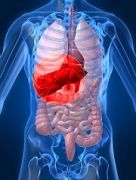Article
New Management and Treatment Guidelines Published for Hepatitis C Virus
Author(s):
The European Association for the Study of the Liver published their updated Clinical Practice Guidelines for the management of the hepatitis C virus, which includes updates regarding people who inject recreational drugs.

The European Association for the Study of the Liver (EASL) published their revised Clinical Practice Guidelines (CPG) for the management of hepatitis C virus. The previous version was published in 2011, and was updated to help physicians and other healthcare providers optimize their management of patients with acute and chronic HCV. The EASL also publishes the Journal of Hepatology monthly.
“As our understanding of HCV increases and therapies evolve, more complex treatment strategies are necessary to achieve the primary goal of curing the infection,” Professor David Mutimer, HCV CPG co-chair reviewer and consultant hepatologist at Queen Elizabeth Hospital, Birmingham, said in a statement. “Since EASL published the last HCV CPG in 2011, two protease inhibitors have been approved for use in patients infected with HCV genotype 1. These first-generation direct-acting antivirals are the first of many direct acting antiviral drugs which will revolutionise treatment for HCV patients, including those who failed to respond to previous therapies. The new guidelines provide essential information on the recommended use of these newly licensed drugs to help prescribers deliver optimal care for their HCV patients.”
The EASL updated their guidelines in such areas as:
- Current standard of care and developing therapies
- Diagnosis of acute and chronic hepatitis C
- Goals and endpoints of HCV therapy
- Indications for treatment and who should be treated
- Treatment strategies for different viral genotypes
- Treatment monitoring including virological response-guided triple, and dual therapy
- Monitoring treatment safety
- Treatment of special groups including HIV co-infection, hepatitis B co-infection and patients with other co-morbidities such as severe liver disease
- Re-infection following successful HCV treatment in patients at high risk (such as people who inject drugs, specifically recreationally)
- The burden of chronic HCV and advanced liver disease among ageing cohorts of people who inject drugs.




